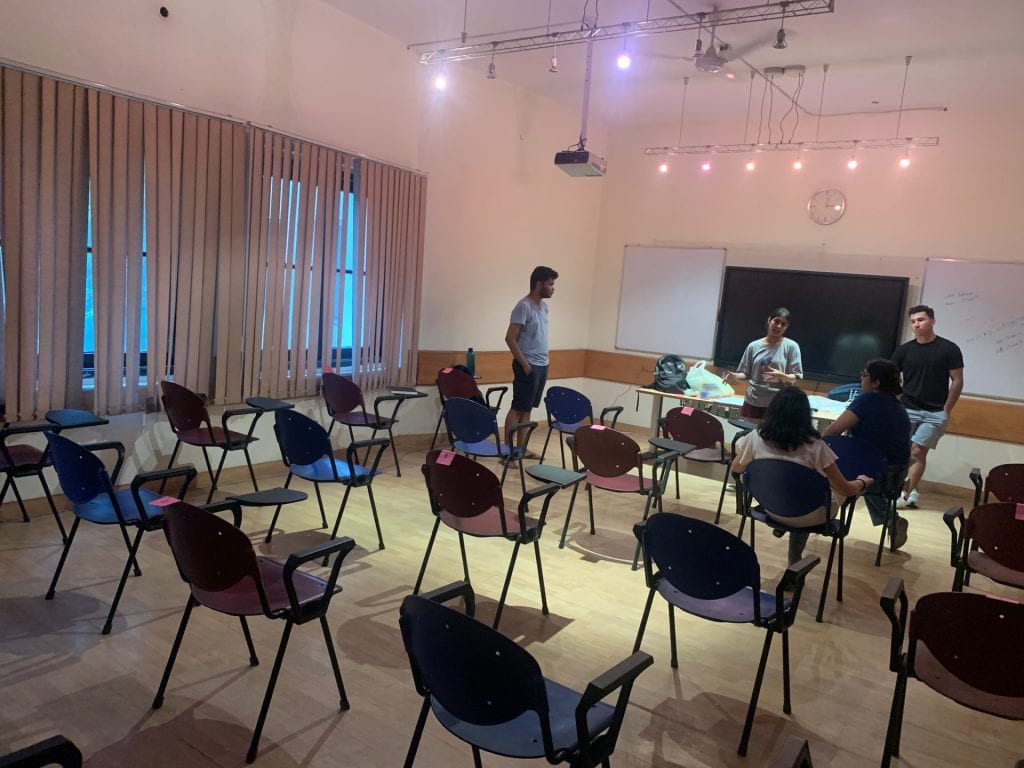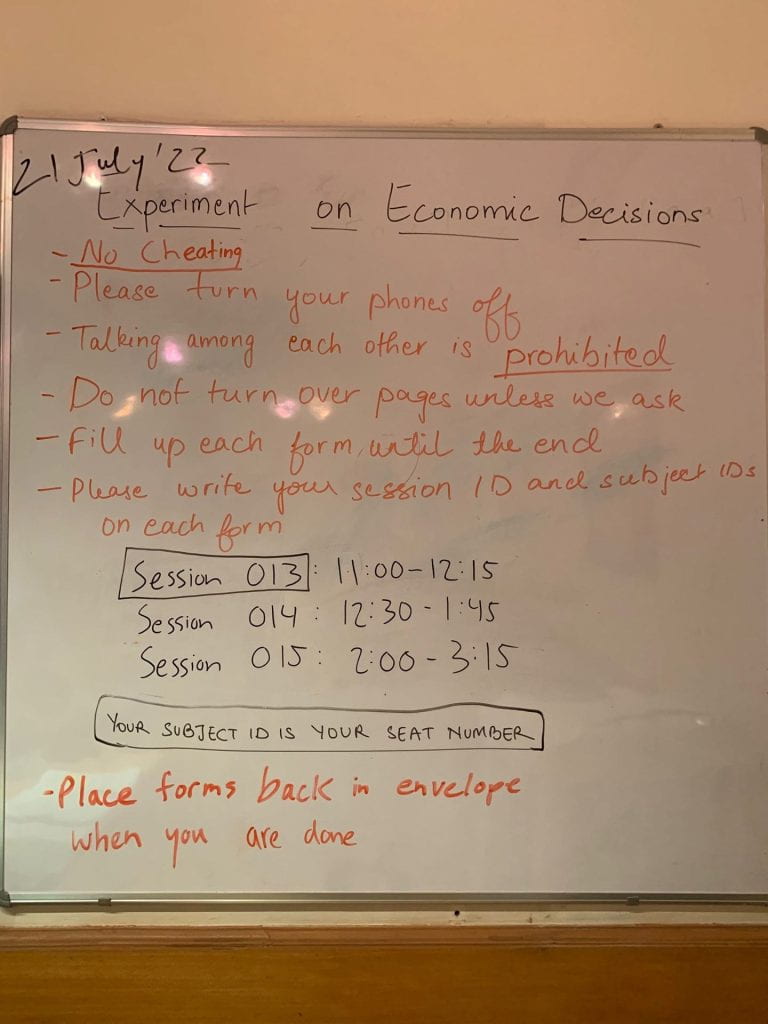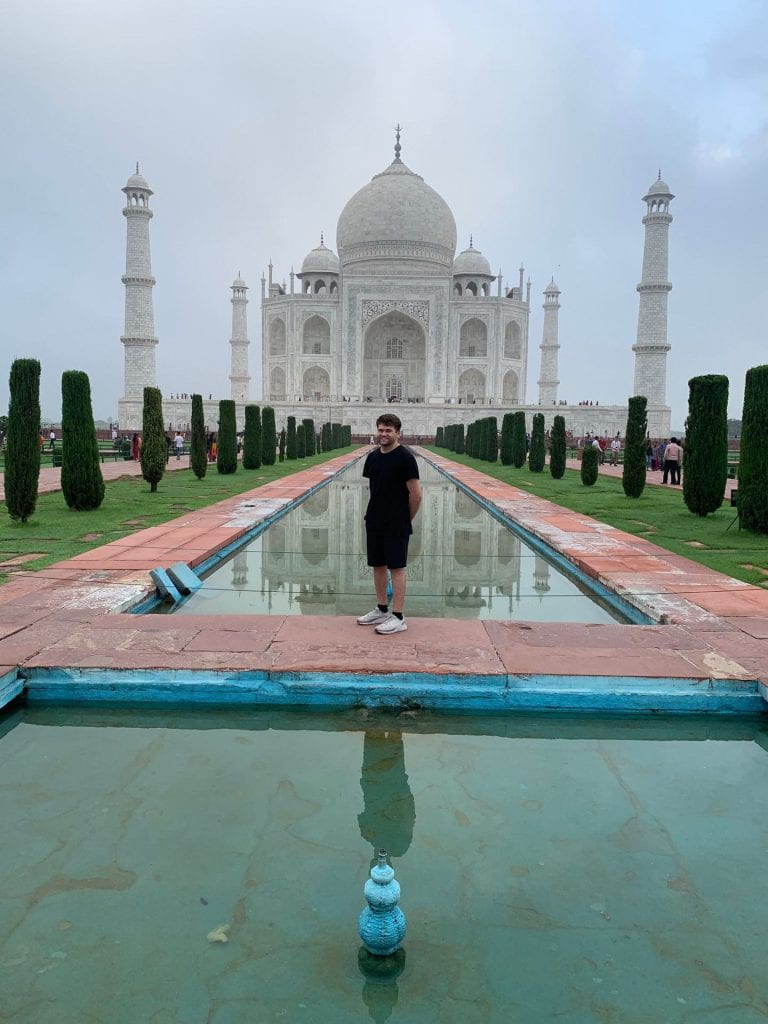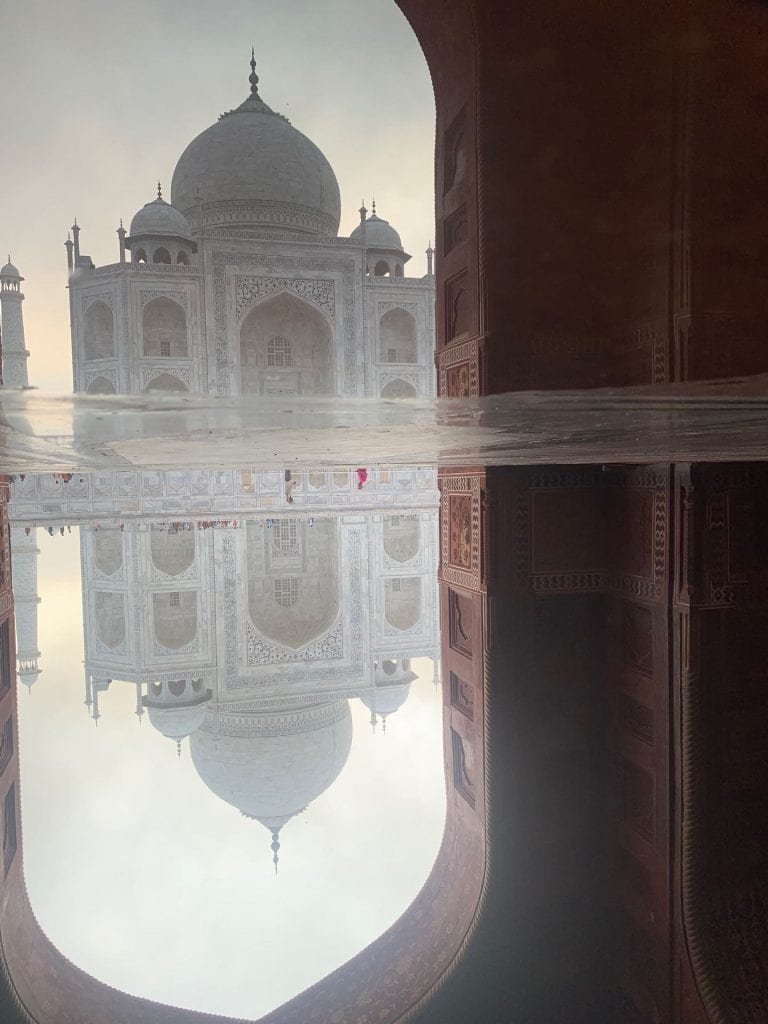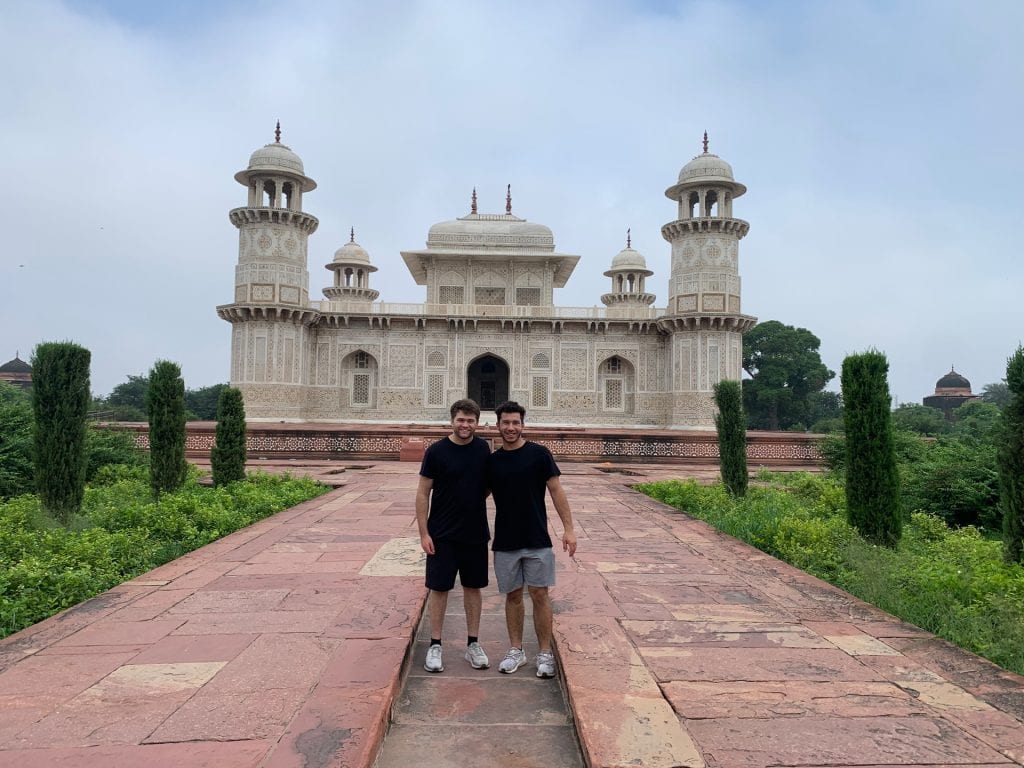Author: Scott Klaus
When I was an economics student at UCLA, I decided development economics was the path I wanted to take for my educational and professional future. Upon seeing USF’s IDEC program, I fell head over heels for the program. Being able to travel abroad for field research and finishing my degree with a thesis seemed like a great opportunity. So after I got in, I began to contemplate where I wanted to go after my first year. However, setting up field research, let alone finding a thesis topic, is not an easy task.
As my first year went on, I decided I wanted to work with Professor Wydick and help an alumnus, Gianna Camacho, with her research concerning interventions for children with clubfoot in Ethiopia. However, Gianna hit a home run with her thesis, and no more work was needed for this project. As a result, I decided to partner with a handful of my classmates in carrying out a cohort-wide project regarding the effects of climate change on human cooperation, my second-choice topic. At its core, this project is based on experimental data, aiming to see if environments with an increase in temperature lead to a breakdown in human cooperation. For example, will people in a room of around 70 degrees Fahrenheit cooperate in tasks more than those in a room of approximately 90 degrees Fahrenheit?
In order to have a wide variety of experimental data, multiple groups of students decided to carry out this project in multiple locations. It was decided groups would go to Mexico, the Philippines, Kenya, and Davis. Due to complications with COVID-19 and local election unrest, the Philippines location fell through and Kenya was postponed. Instead of going to the Philippines, fellow students and I would conduct the experiment in New Delhi, India during July at the Delhi School of Economics (DSE). Thanks to master planning by IDEC classmate Angira Shukla, MSAE student Jake Cosgrove and I were able to travel around the world to meet her in New Delhi to collect our data for this “climate and cooperation experiment” as it has been called.
For much of the planning process, a lot of the “where” for our plans was unknown. It wasn’t until a week before our travels that Angira helped us nail down a place to stay near DSE, as well as a room to conduct the experiment. Furthermore, I did not know too much about India aside from the people I grew up with as well as some of the culinary masterpieces. This would indeed be a journey into the unknown.
Arrival
Our arrival was immediately met with challenges. Having landed at 2am local time, we were already jet-lagged and exhausted. After we had got everything we needed, we took an uber to our hostel. Unfortunately, we were unable to communicate effectively with our uber driver and could not find the hostel. This is not something that is fun in a vastly foreign country during the middle of the night. Luckily, Jake and I met two amazing local students who led us to where we needed to be, but this was not the end of our troubles. The caretaker of the hostel was not particularly happy to be woken up at four in the morning. He could only communicate in Hindi and was not willing to open the front gate to two foreigners. Thankfully, our newly made friends could talk with him, and it was decided that we would have to come back at six to be let in, which is exactly what we did after spending time with the local students we met.
After we were let in, we got settled, rested for a couple days, and began to set up for our experiment at DSE. It was decided that I would handle the running of the experimental sessions, Jake would be the mastermind behind physical data collection and immediate entry, and Angira would handle the tedious payments and financial duties. Additionally, we had three Research assistants from the University of Delhi to help us with our next two weeks of experimental sessions. As the room was rather large, our main challenge would be to effectively and timely reduce the room’s temperature with the variation we needed. Once a decent amount of people entered the room, the temperature would climb to around 92 degrees Fahrenheit. Therefore, cooling the room was what we needed to be proactive about.
What we had to work with was one of the room’s two central cooling systems, a smaller AC unit, and a room cooler (which is a unit consisting of cool water and a fan moving air through it). To our surprise, this was sufficient enough to cool the room to the temperatures we needed.
The Experiment
Our experiment consists of eight different tasks: three activities of raven’s matrices (picture puzzles), four dictator games with varying allocations, and one risk aversion game based on a coin flip. Each subject would be paid for only ONE of the eight tasks, which would be drawn randomly from a bag of numbered wooden blocks at the end of the session. In our setup, we would run three sessions a day, consisting of a maximum of 14 subjects per session. Each day would be either a control (low temperature) day or a treatment (high temperature) day. It is safe to say that we strongly preferred control days to treatment days.
Our first day of sessions brought its own set of challenges. The data from our first session had to be completely thrown out, as the subjects were unruly. They would communicate with each other by yelling across the room, mock us for our subtle mistakes, and get ahead of us in the experiment without our direction. As a result, we decided to write our own experimental rules on the front whiteboard. Going forward, this helped us finish each session with completely usable observations.
The last challenge we faced was getting an adequate amount of people to show up to the experiment. Large numbers of people would sign up, but not everyone would arrive to participate. At the rate we were going, we would not reach the threshold of 350 participants needed for statistical power. Therefore, we decided to add a fourth session to every day of experiments during the second week. Regrettably, I would not be able to participate in the entire second week of experiments as personal disaster would strike me; thankfully, Jake, Angira, and our RAs were able to go above and beyond the 350 subject threshold, and pull off week number two without a hitch.
A Week of Pain
After finishing up our first week of experiments, illness struck my body. Following two days of constantly having to use the restroom every half an hour, I decided to visit a local hospital with the help of USF and International SOS. I checked into the emergency room at Indraprastha Apollo hospital in South Delhi, expecting to leave a few hours later. However, due to my dehydration, I was admitted to the hospital with very little of my belongings and no idea when I would leave. The next day, I was diagnosed with four different infections in my digestive tract: cholera, giardia, rotavirus, and campylobacter. To be honest, I thought cholera had died out with the Oregon trail pioneers from the 1800s. Luckily, the hospital treated me well, had nice food, and I was discharged after a long week of recovery. I can’t say it was the most fun stay; my anxiety grew, and at times I considered taking the first flight out when I could. Thankfully, USF helped me through this tough time, and most importantly, took care of the finances. To this day, I still do not know what I ate or drank to contract all of those infections. I never knowingly drank the local tap water, which many people thought I must have done.
After coming back to my hostel, I decided to tough out my original plans with Jake, even if the experiment had already come to an end. Going forward I would be increasingly more cautious with what I would eat and drink, sticking to bottled water over even filtered water.
Sight-seeing
Delhi
In my last two weeks in India, I had the chance to go to some truly amazing places. Jake and I finished inputting the experimental data with a little over a week of time left, so we decided to take advantage of the lack of responsibilities. Frequently, our classmate Angira would come by to take us places, including Connaught Place and the famous market of Dilli Haat. When we weren’t visiting local sights, she would bring us to great food spots nearby.
On one of our Wednesday nights, some of our friends at the hostel took us to a famous Sikh temple named Gurudwara Bangla-Sahib. While there, we were educated on the Sikh religion, got to see the beautiful temple, partook in a meal at the community kitchen, and washed some dishes for the kitchen. The next day, Jake and I took a Delhi city tour of all the local monuments. Among the places, we visited include Jama Masjid, Old Delhi, Akshardham, The Lotus Temple, Humayun’s Tomb, and Qutub Minar. I have included photos below in that order.
Agra
A few days before our departure, we booked a day trip to Agra to see the Taj Mahal and other nearby spots. Since we were told the best time to see the Taj Mahal was at sunrise, we rode with a driver from 2:00 am-5:30 am, and made it just in time to see one of the world’s modern wonders. Although many of the friends I made in India had told me it was overrated, the Taj Mahal was anything but: it was as amazing as everyone else had said it would be.
While we were there, we also got the chance to see the beautiful tomb of Itmad-ud-Daula, pictured below.
After returning from Agra, we rested and began preparing for the journey back to America. Although much about India was unknown to me before I went, it feels somewhat familiar to me now. Even if I did have my share of troubles with the experiment and my health, my month-long stay in India is truly one I will never forget.
Special thanks to Angira and USF for making all of it possible. Especially, thanks to Professor Bruce Wydick for advising me then and now, and for keeping in touch while I was in the hospital. We couldn’t have done it without you, the mind behind it all!
